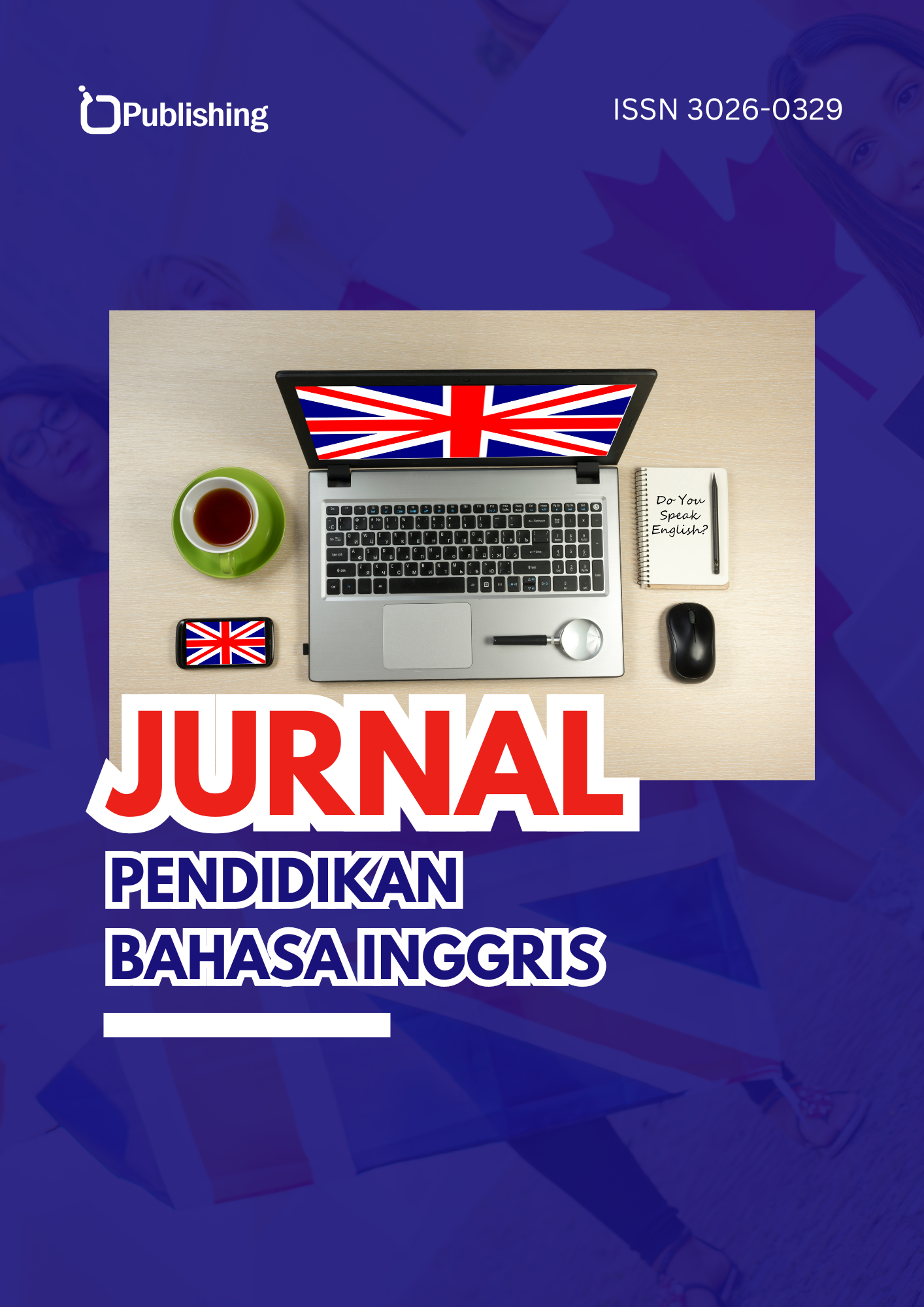Effectiveness Of E-Learning on Micro-Entrepreneurs For English Language Training In Tomok Village
DOI:
https://doi.org/10.47134/jpbi.v2i1.946Keywords:
E-Learning, Micro-Entrepreneurs, English Language Training, Tourism IndustryAbstract
This study investigates the impact of an e-learning-based English language training program on micro-entrepreneurs in Tomok Village, Indonesia. With tourism rapidly expanding in the Asia Pacific region, English proficiency is essential for businesses to interact effectively with foreign tourists. The study employs the ADDIE instructional design model (Analysis, Design, Development, Implementation, Evaluation) to assess the effectiveness of the training program. Data were collected through questionnaires, interviews, and pre- and post-tests involving 30 micro-entrepreneurs. The results indicate significant improvements in participants' English proficiency, as evidenced by increased post-test scores compared to pre-test results. Furthermore, participants expressed a strong preference for the flexibility of e-learning, which allows them to learn while managing their businesses. This research highlights the potential of e-learning to enhance micro-entrepreneurs' communication skills in tourism settings, thereby increasing their economic prospects.
References
Allen, M. W. (2016). Michael Allen's Guide to e-Learning: Building Interactive, Fun, and Effective Learning Programs for Any Company (2nd ed.). Wiley. DOI: https://doi.org/10.1002/9781119176268
Bielenia-Grajewska, M., & Cortes De Los Rios, E. (2018). Innovative Perspectives On Tourism Discourse: In Advances In Hospitality, Tourism, And The Services Industry. DOI: https://doi.org/10.4018/978-1-5225-2930-9
Burns, A. (2010). Doing Action Research in English Language Teaching: A Guide for Practitioners. Routledge. DOI: https://doi.org/10.4324/9780203863466
Clark, R. C., & Mayer, R. E. (2016). e-Learning and the Science of Instruction: Proven Guidelines for Consumers and Designers of Multimedia Learning (4th ed.). Wiley. DOI: https://doi.org/10.1002/9781119239086
Clark, R.C. & Mayer, R.E. (2008). E-learning and the science of instruction: proven guidelines for consumers and designers of multimedia learning, second edition. San Francisco: John Wiley & Sons, Inc
Cohen, L., Manion, L., & Morrison, K. (2018). Research Methods in Education (8th ed.). Routledge. DOI: https://doi.org/10.4324/9781315456539
Creswell, J. W., & Creswell, J. D. (2018). Research Design: Qualitative, Quantitative, and Mixed Methods Approaches (5th ed.). Sage.
Damayanti, L. S. (2019). Peranan Keterampilan Berbahasa Inggris Dalam Industri Pariwisata. Journey: Journal of Tourismpreneurship, Culinary, Hospitality, Convention and Event Management, 2 (1), 71–82, DOI: https://doi.org/10.46837/journey.v2i1.42
Field, A. (2013). Discovering Statistics Using IBM SPSS Statistics (4th ed.). Sage Publications.
Ho, Y. Y. C. (2020). Communicative language teaching and English as a foreign language undergraduates’ communicative competence in Tourism English. Journal of Hospitality, Leisure, Sport & Tourism Education, 27, 100271, https://doi.org/10.1016/j.jhlste.2020.100271 DOI: https://doi.org/10.1016/j.jhlste.2020.100271
Horng, J. S., Liu, C. H., Chou, H. Y., & Tsai, C. Y. (2012). Understanding the impact of culinary brand equity and destination familiarity on travel intentions. Tourism Management, 33(4), 815–824. https://doi.org/10.1016/j.tourman.2011.09.004 DOI: https://doi.org/10.1016/j.tourman.2011.09.004
Hutagalung, T., Sari, D. E., & Wasilah, A. (2018). The Effectiveness of E-Learning on Students in the Teaching of Children’s Literature Subject in Indonesian Language and Literature Study Program. Budapest International Research and Critics Institute (BIRCI-Journal): Humanities and Social Sciences, 1(4), 277-81. DOI: https://doi.org/10.33258/birci.v1i4.119
Joshi, A., Kale, S., Chandel, S., & Pal, D. K. (2015). Likert Scale: Explored and Explained. British Journal of Applied Science & Technology, 7(4), 396-403. DOI: https://doi.org/10.9734/BJAST/2015/14975
Kirkpatrick, D. L., & Kirkpatrick, J. D. (2006). Evaluating Training Programs: The Four Levels (3rd ed.). Berrett-Koehler,
Lee, C. C., & Chien, M. S. (2008). Structural breaks, tourism development, and economic growth: Evidence from Taiwan. Mathematics and Computers in Simulation, 77, 358–368. https://doi.org/10.1016/j.matcom.2007.03.004 DOI: https://doi.org/10.1016/j.matcom.2007.03.004
Molenda, M. (2003). In search of the elusive ADDIE model. Performance Improvement, 42(5), 34-36. https://doi.org/10.1002/pfi.4930420508 DOI: https://doi.org/10.1002/pfi.4930420508
Munghate, R. 2012. Role of English in travel, tourism & hospitality industry. In book: Role of English Language In Travel & Tourism (pp.220-227). Publisher: Sanjay Thakre ,Shri. Sahitry Kendra , Nagpur.
Organisation for Economic Co-operation and Development. (2020). Tourism Policy Responses to the coronavirus (COVID-19). OECD Publishing. https://doi.org/10.1787/6466aa20-en DOI: https://doi.org/10.1787/6466aa20-en
Republic of Indonesia. (2020). National Medium Term Development Plan (RPJMN) 2020-2024. Ministry of National Development Planning/Bappenas. https://www.bappenas.go.id/id/data-dan-informasi-utama/dokumen-perencanaan-dan-pelaksanaan/rpjmn-2020-2024/
Republika Online. (2022). Pemerintah segera tata kawasan Tomok Samosir untuk dukung wisata Toba. Retrieved from https://news.republika.co.id/berita/rbwjoq330/pemerintah-segera-tata-kawasan-tomok-samosir-untuk-dukung-wisata-toba
Sari, N. T. P., & Kusumawati, A. (2022). Literature review: The efforts to strengthening of micro, small and medium-sized enterprises (MSME) in Indonesia. Asian Journal of Management, Entrepreneurship and Social Science, 2(01), 98-115.
Setiyartiti, L., & Rachmawatie, D. (2021). Batik industry development based on rural economic development: the case study of Gunungkidul Regency. In E3S Web of Conferences (Vol. 316, p. 04013). EDP Sciences. DOI: https://doi.org/10.1051/e3sconf/202131604013
Singh, A. (1997). Asia Pacific tourism industry: Current trends and future outlook. Asia Pacific Journal of Tourism Research. https://doi.org/10.1080/10941669808721988 DOI: https://doi.org/10.1080/10941669808721988
Siregar, A. Z., Mahatir, M., Hutagalung, A. E., Sabila, H., Luthfiah, W., Ningrum, T. D. A., ... & Surbakti, M. I. (2024). Dampak Perkembangan Pariwisata Desa Tomok Terhadap Sosial Ekonomi dengan Perspektif Danau Toba “Monaco of Asia”. Buletin Pengabdian Multidisiplin, 2(1), 40-49. DOI: https://doi.org/10.62385/budimul.v2i1.69 DOI: https://doi.org/10.62385/budimul.v2i1.69
Trochim, W. M. K., Donnelly, J. P., & Arora, K. (2016). Research Methods: The Essential Knowledge Base (2nd ed.). Cengage Learning.
Wikipedia Bahasa Indonesia. (n.d.). Tomok, Simanindo, Samosir. Retrieved from https://id.wikipedia.org/wiki/Tomok,_Simanindo,_Samosir
World Tourism Organization. (2017). Tourism and the Sustainable Development Goals Journey to 2030. UNWTO. https://www.eunwto.org/doi/book/10.18111/9789284419401
Downloads
Published
How to Cite
Issue
Section
License
Copyright (c) 2024 Amelia Agnes Simbolon, Alfira Isya Nabila, Joys Andrean Mardohar Sitanggang, Nabila Amanda Sabrina, Shinta Melina Sidabutar, Anisa Jimina Sinaga, Juli Rachmadani Hasibuan

This work is licensed under a Creative Commons Attribution 4.0 International License.










